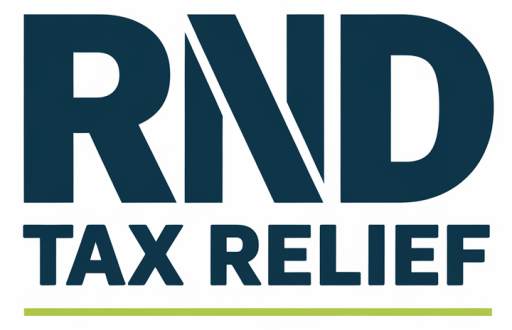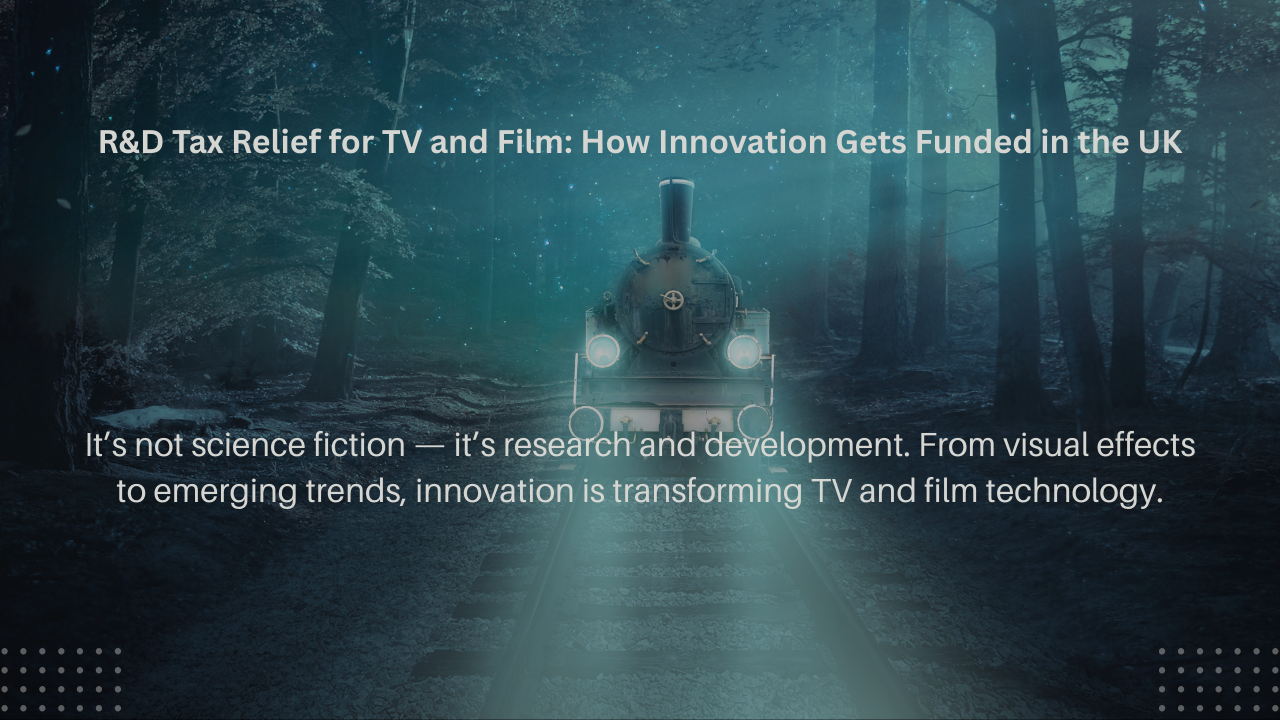R&D Tax Relief for TV and Film: How Innovation Gets Funded in the UK
From television dramas to major blockbusters, the UK’s film and TV industry has always thrived on creativity and technology. Behind the scenes, thousands of specialists are constantly developing new tools, techniques, and processes to bring stories to life. But pushing boundaries in filmmaking is costly, and that’s where R&D tax relief comes in.
This government-backed incentive gives production companies, animation houses, and VFX teams the chance to claim back money spent on innovation freeing up budgets to keep projects moving forward.
Why the Film and TV Industry Relies on Innovation
Film and television are more than just entertainment. They are a mix of art and science, driven by constant research and experimentation. Whether it’s the first CGI in Hitchcock’s Vertigo, the switch to colour broadcasting, or today’s immersive VR productions, the industry has always relied on research and development.
Recent years have seen innovation in areas such as:
- Streaming platforms that changed how audiences consume content
- Visual effects (VFX) creating hyper-realistic worlds
- Virtual and augmented reality (VR/AR) adding new layers of storytelling
- Sustainable film production to cut carbon footprints
Each of these developments involves technical challenges the exact type of projects HMRC encourages through tax relief.
What is R&D Tax Relief and Why It Matters for Film
Put simply, R&D tax relief allows UK companies to claim back a portion of the money spent on advancing science or technology. For the film and TV sector, this often means developing new digital effects, software tools, or production methods.
Through R&D tax credits, companies can reduce their corporation tax bill or even receive a cash refund. This makes it easier to fund high-risk, experimental projects.
According to HMRC, projects need to aim at overcoming scientific or technological uncertainty. In practice, this means the work must go beyond simply using existing tools it should push knowledge forward.
Quick eligibility checklist (snippet-ready):
- Does your project seek a technological advance?
- Did you face technical uncertainties you couldn’t easily resolve?
- Can you show evidence of systematic testing or problem solving?
- Did the project involve qualified staff or subcontractors?
If you answered “yes” to these, your project may qualify.
How Film and TV Companies Qualify for R&D Tax Credits
Many creative businesses don’t realise their work counts as R&D. In reality, plenty of everyday activities in film and TV meet HMRC’s criteria.
Qualifying activities include:
- Building new VFX or CGI pipelines
- Developing real-time rendering software
- Experimenting with motion capture techniques
- Creating sustainable film technologies (eco-lighting, new materials)
- Designing new editing or streaming platforms
Eligible costs can include:
- Salaries, NIC and pension contributions for in-house staff
- Payments to subcontractors or freelancers working on R&D
- Software licences used in development
- Prototype and testing materials
Even small production companies or post-production houses can benefit it’s not limited to large studios.
Real Examples of R&D in the UK Film Industry
To make it more tangible, here are some examples of how innovation in film can lead to successful R&D claims:
- VFX studio – A London-based studio developed new algorithms to speed up rendering times. Their staff and software costs qualified for R&D tax relief.
- Independent filmmaker – An SME tested AI-driven editing tools to automate post-production. The technical work counted as eligible R&D.
- Animation company – A team trialled a real-time motion capture system to create lifelike characters for a children’s series. Their prototype costs and staff time were claimable.
These examples show that R&D tax relief isn’t just for big-budget productions. Small and medium-sized businesses can also claim and reinvest.
AVEC vs R&D Tax Relief What’s the Difference?
Film and TV businesses in the UK may also come across the Audio-Visual Expenditure Credit (AVEC). This incentive supports production costs and replaced the older Film Tax Relief and High-End TV Relief schemes.
- AVEC rates (from Jan 2024):
- 39% for children’s TV, animated films, and animated TV
- 34% for all other eligible films and TV
Can you claim both?
Yes. Businesses can apply for AVEC and R&D tax relief if they separate eligible costs. For instance, software R&D costs might go under R&D credits, while production expenses qualify for AVEC.
Benefits of Claiming R&D Tax Relief for Film & TV
The impact of claiming R&D tax relief goes far beyond tax savings. Benefits include:
- Cash flow boost – refunds can provide immediate working capital
- Lower financial risk – helps offset the costs of trial and error
- Supports growth – SMEs can reinvest into bigger projects
- Improves reputation – innovative studios attract investors and talent
- Competitive edge – keeps UK productions on par with Hollywood standards
In a £100+ billion industry, these advantages can make the difference between a project stalling or getting greenlit.
Step-by-Step: How to Claim R&D Tax Relief for Film Projects
Applying for relief doesn’t need to be complicated. Here’s a simple process:
- Identify eligible projects – Review any technical challenges in your film or TV work.
- Collect documentation – Keep records of costs, staff time, and technical reports.
- Prepare the claim – Align with HMRC’s definition of R&D.
- Submit through HMRC – As part of your company tax return.
- Receive your benefit – Either reduced corporation tax or a cash payment.
Want tailored guidance? Book your free consultation today.
FAQs on R&D Tax Relief for Film & TV
Can small film studios apply for R&D tax relief? Yes. SMEs can claim even if they’re not profitable yet — relief can be received as a cash refund.
Can I claim if my project used existing software? Yes, if you adapted or applied it in a way that solved technical challenges. The cost of software licences is often claimable.
Can you claim both AVEC and R&D tax credits? Yes, provided you separate eligible expenses between the two schemes.
How long does it take to receive R&D tax relief? Most claims are processed by HMRC within 6–10 weeks, though complex cases may take longer.
Final Thoughts
Innovation has always been at the heart of TV and film — from the invention of motion picture cameras to today’s real-time CGI. But every new leap requires investment, and financial support is essential.
R&D tax relief gives UK production companies the opportunity to keep experimenting, keep innovating, and keep audiences captivated without being held back by cost.
If you’re working on groundbreaking film or TV projects, don’t leave money on the table.
Book your free consultation today and let’s maximise your claim.





